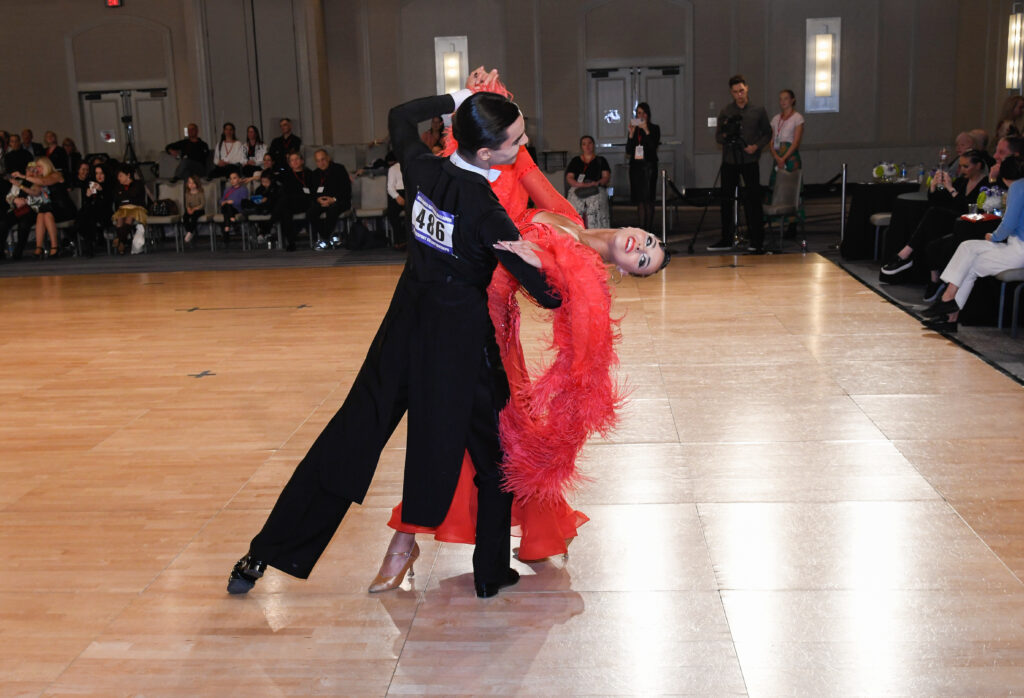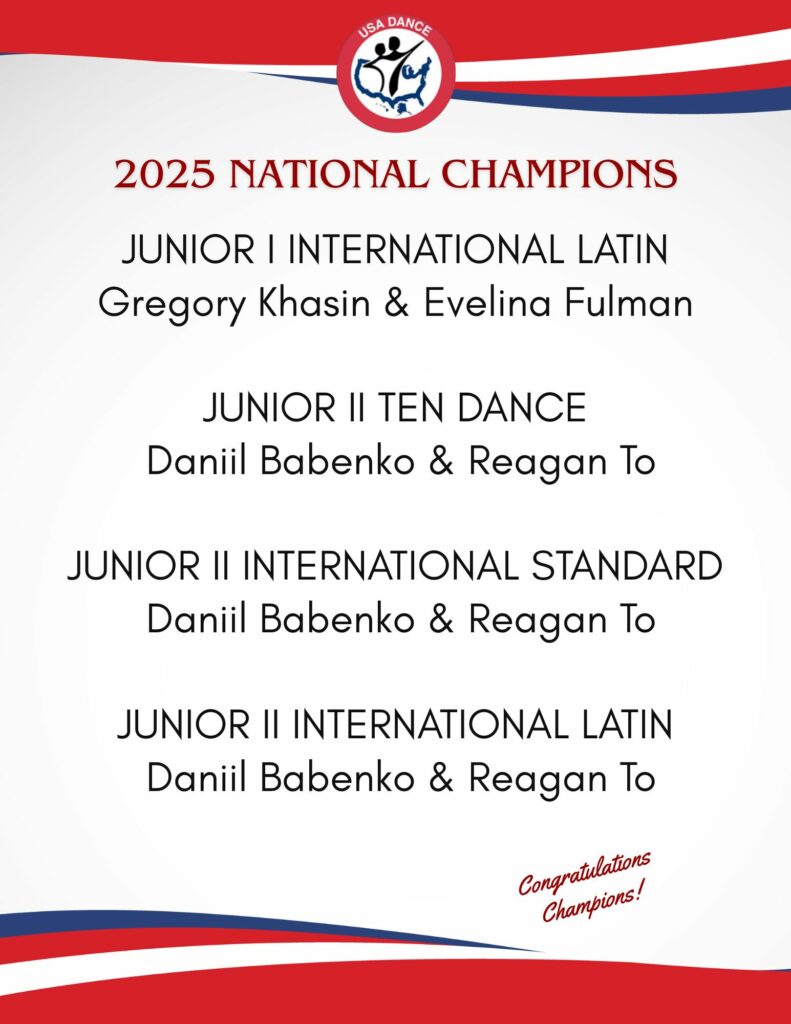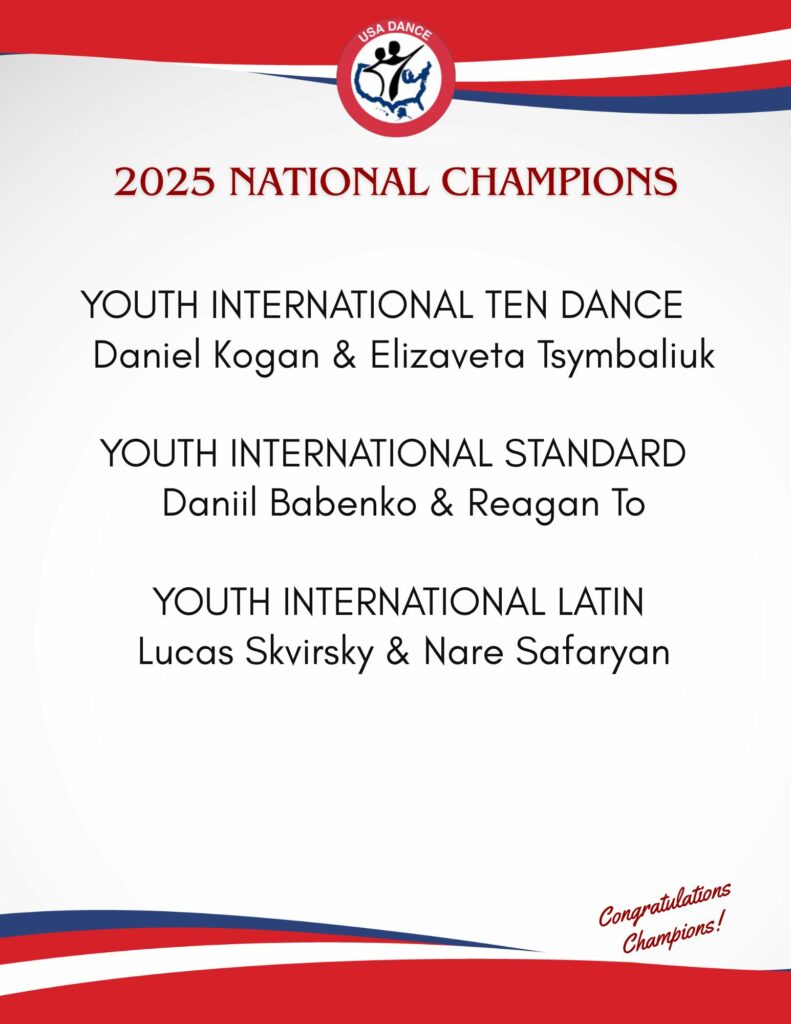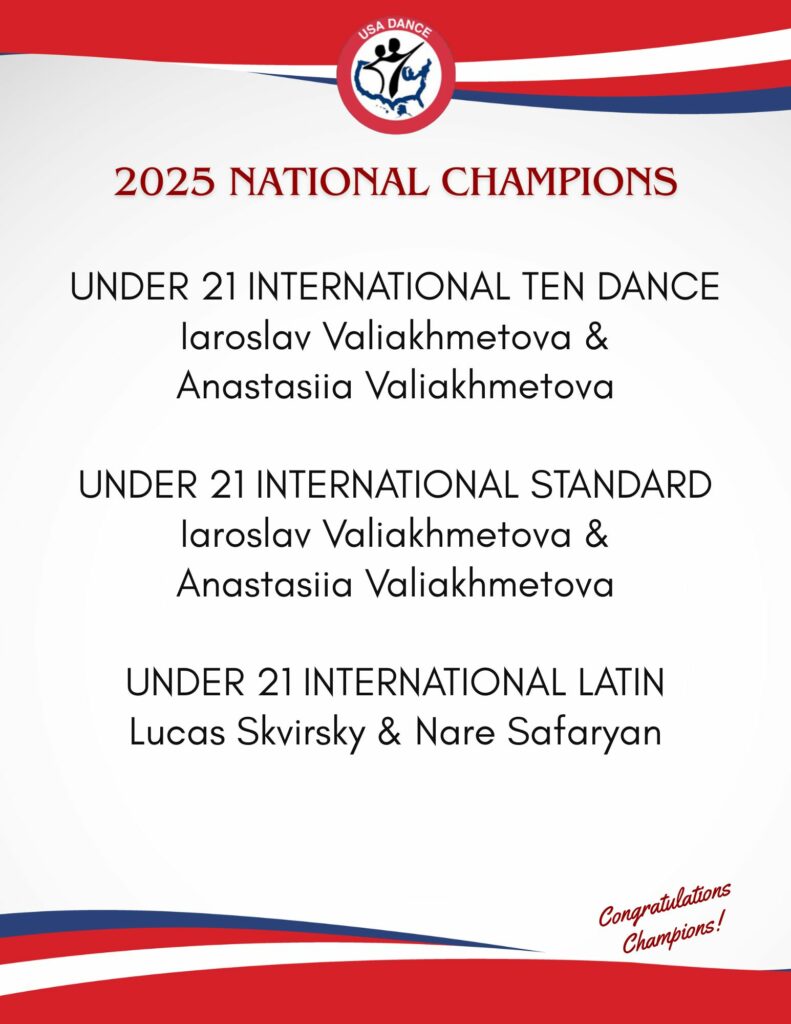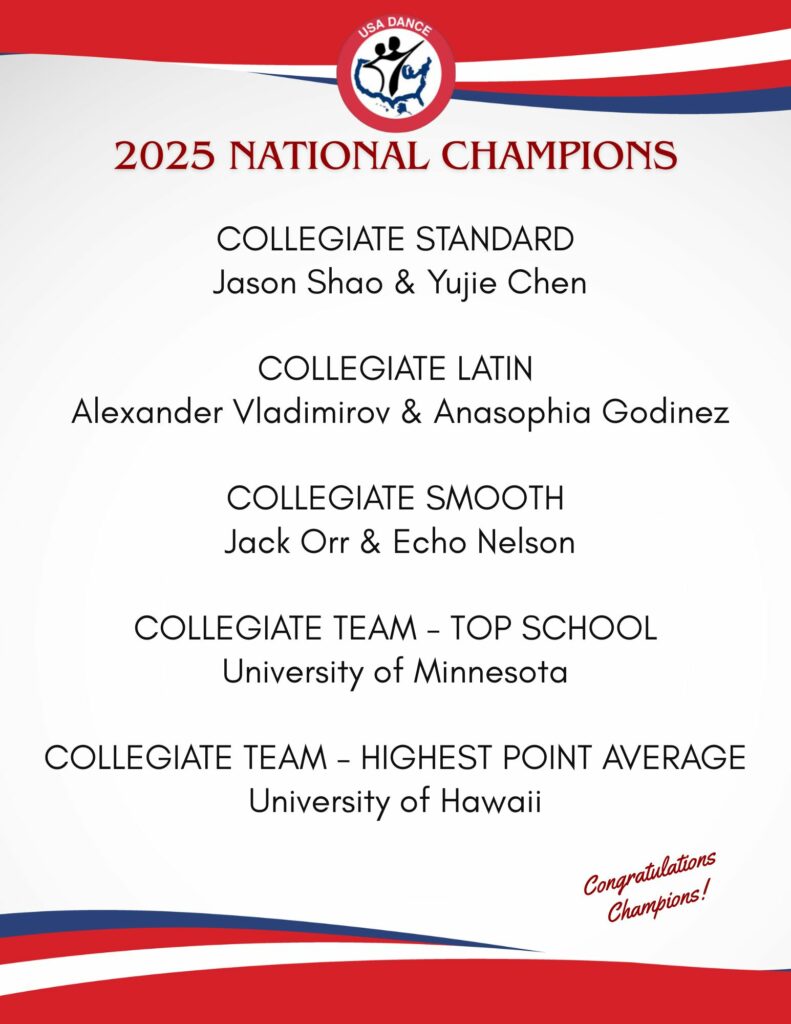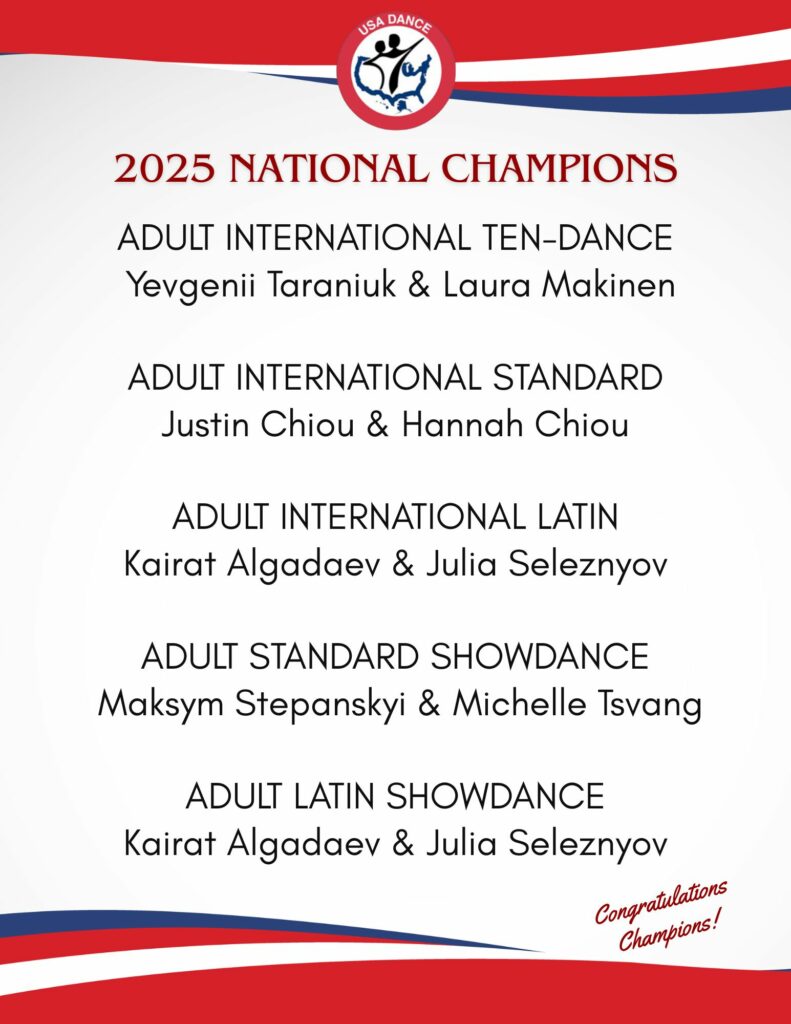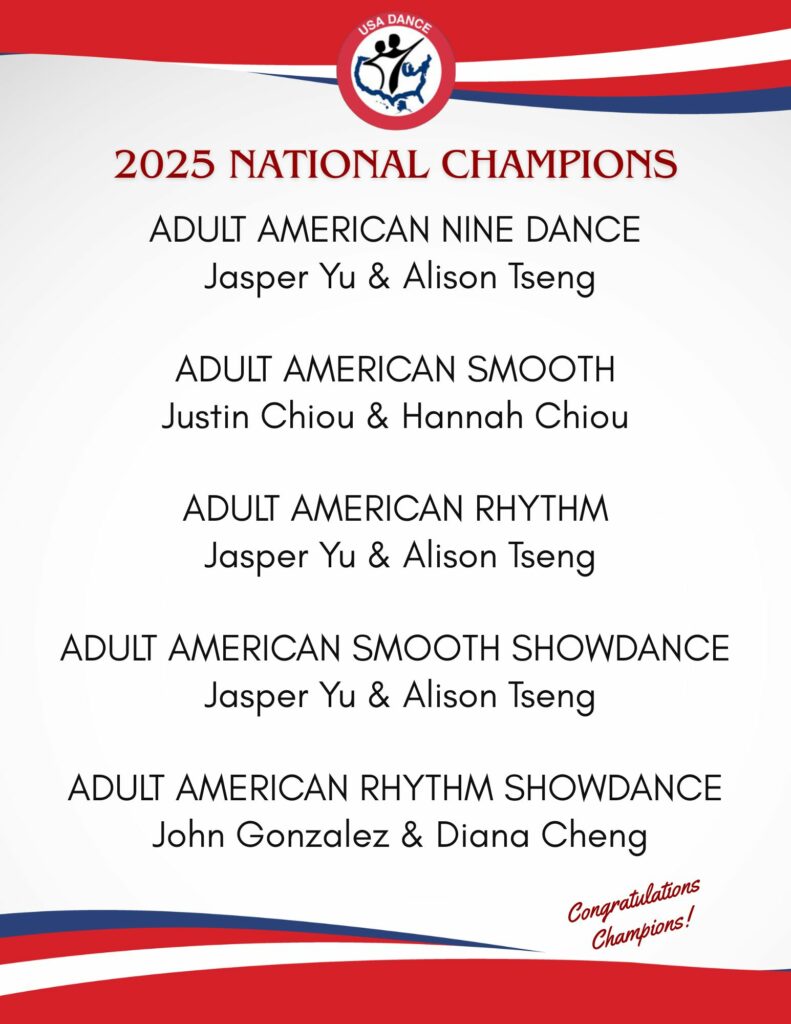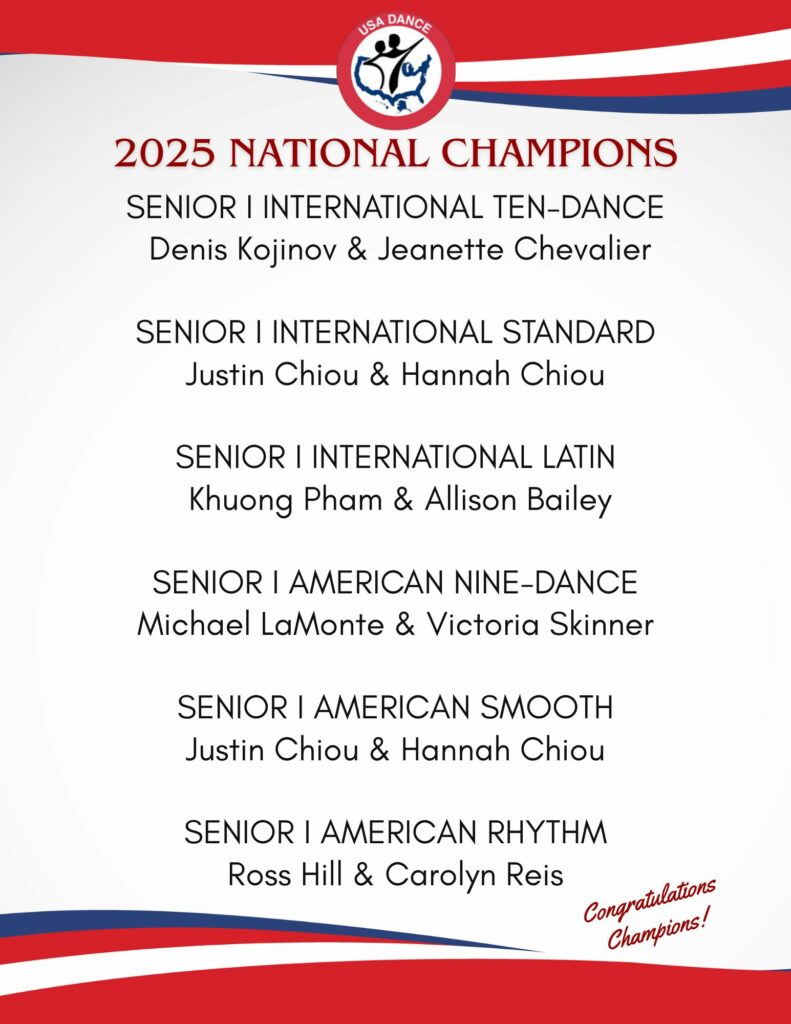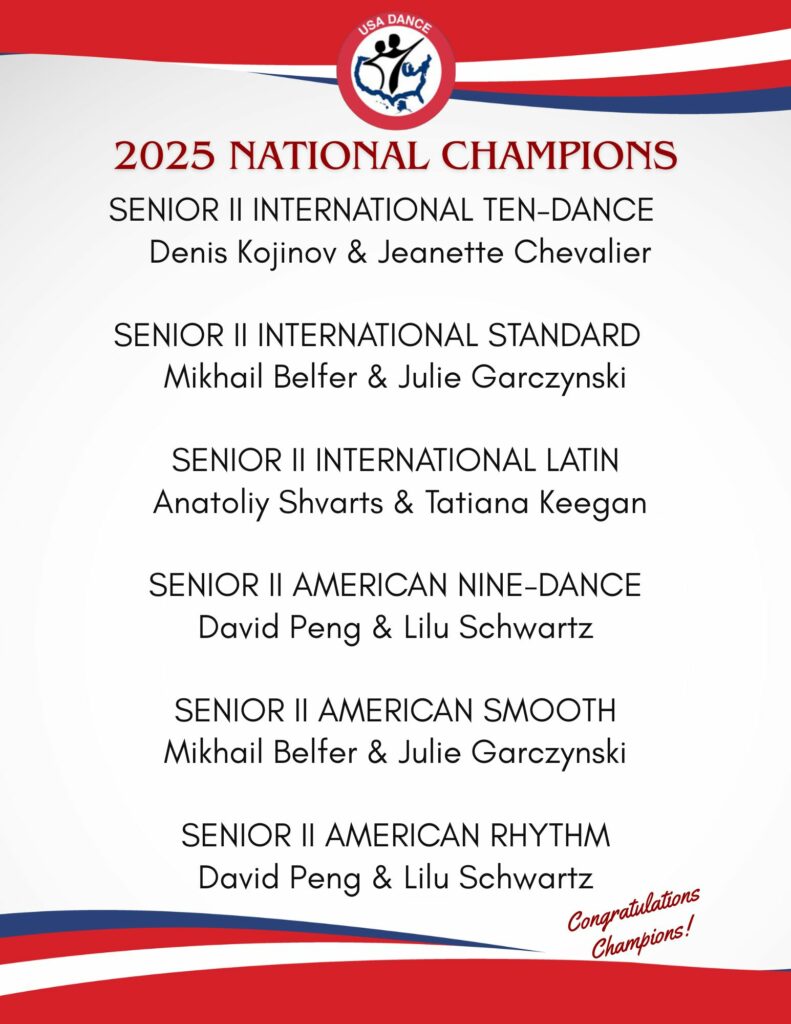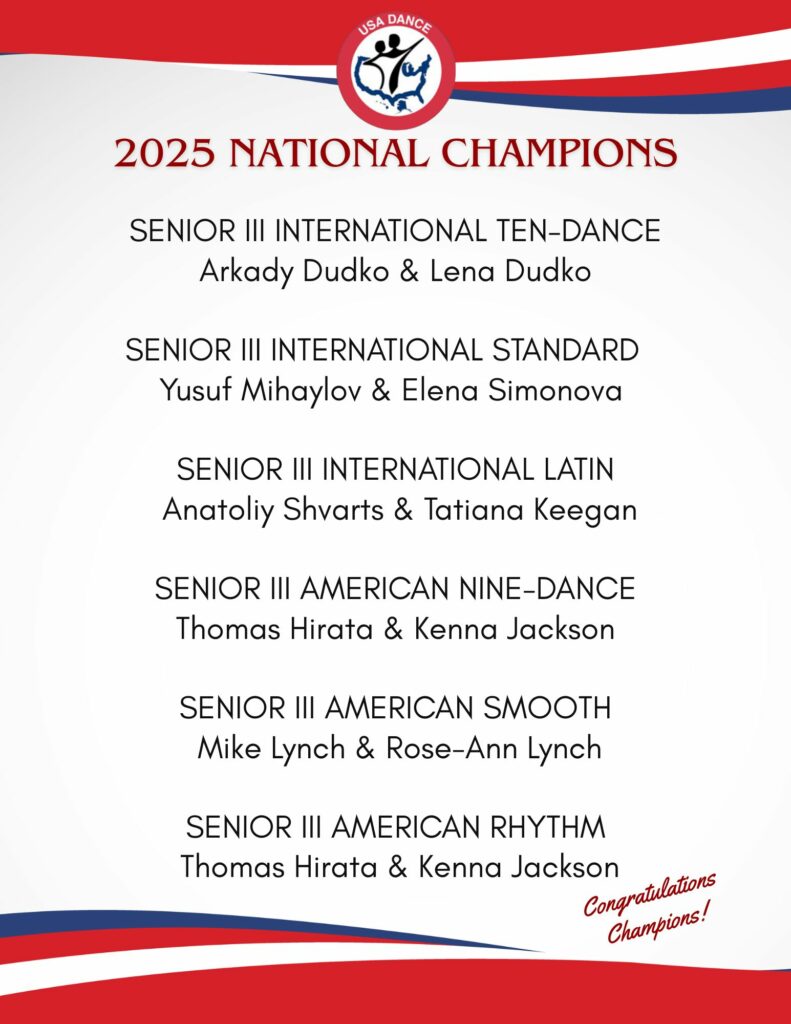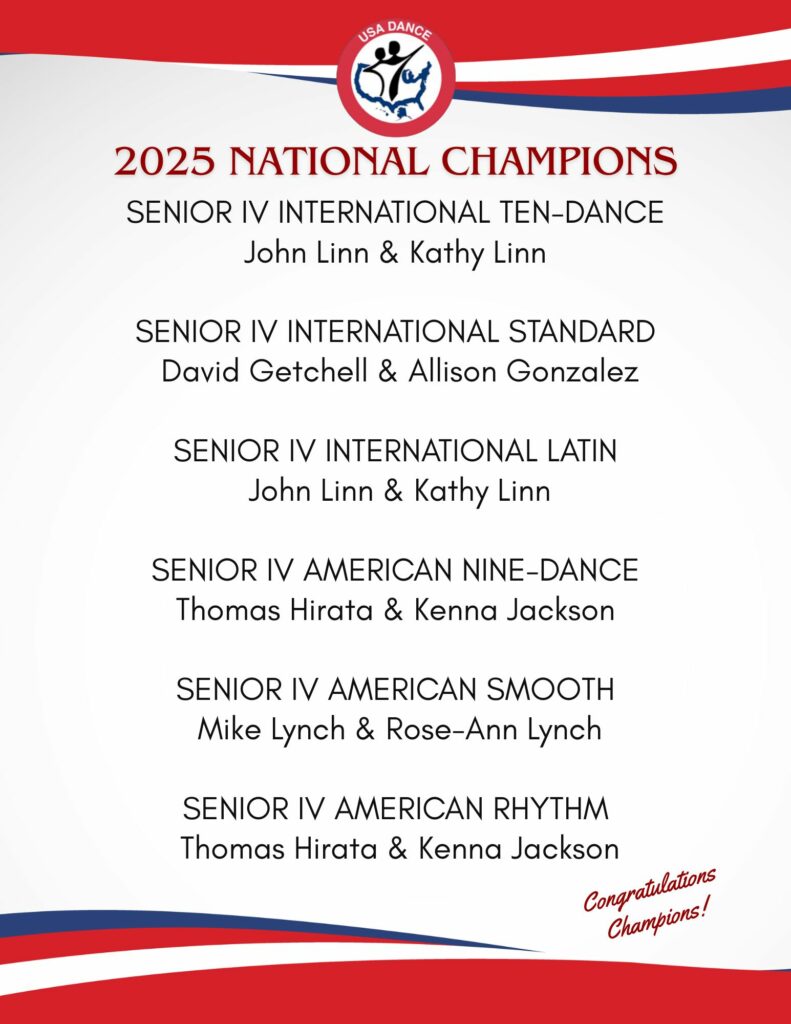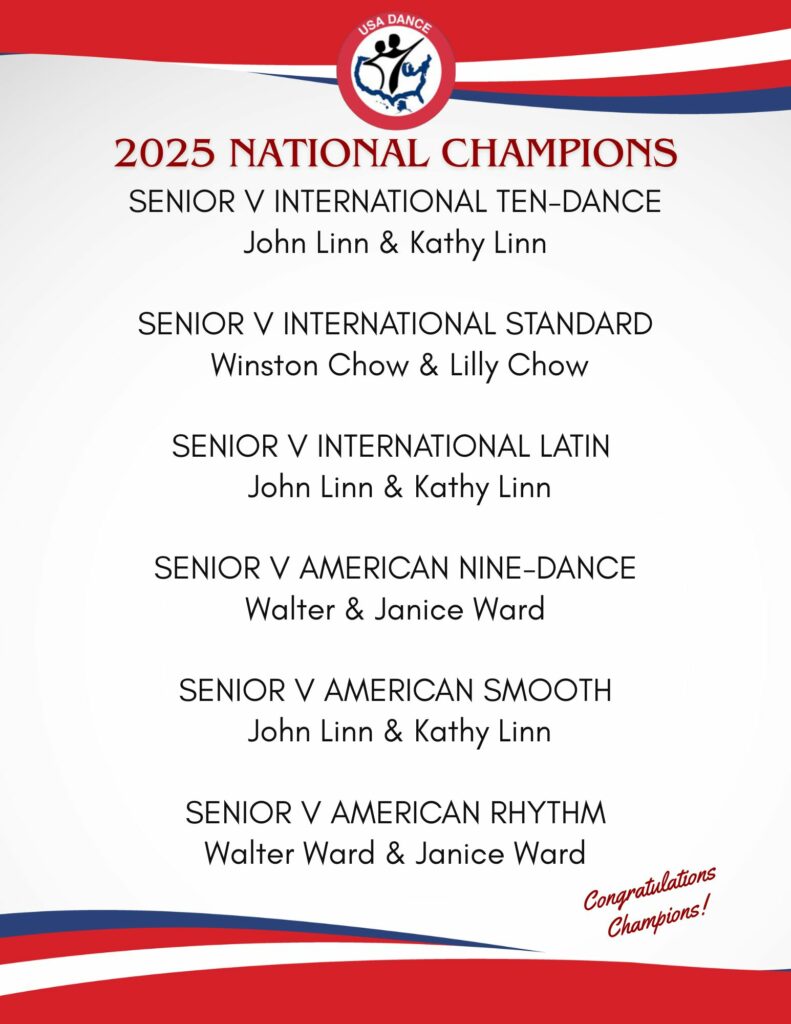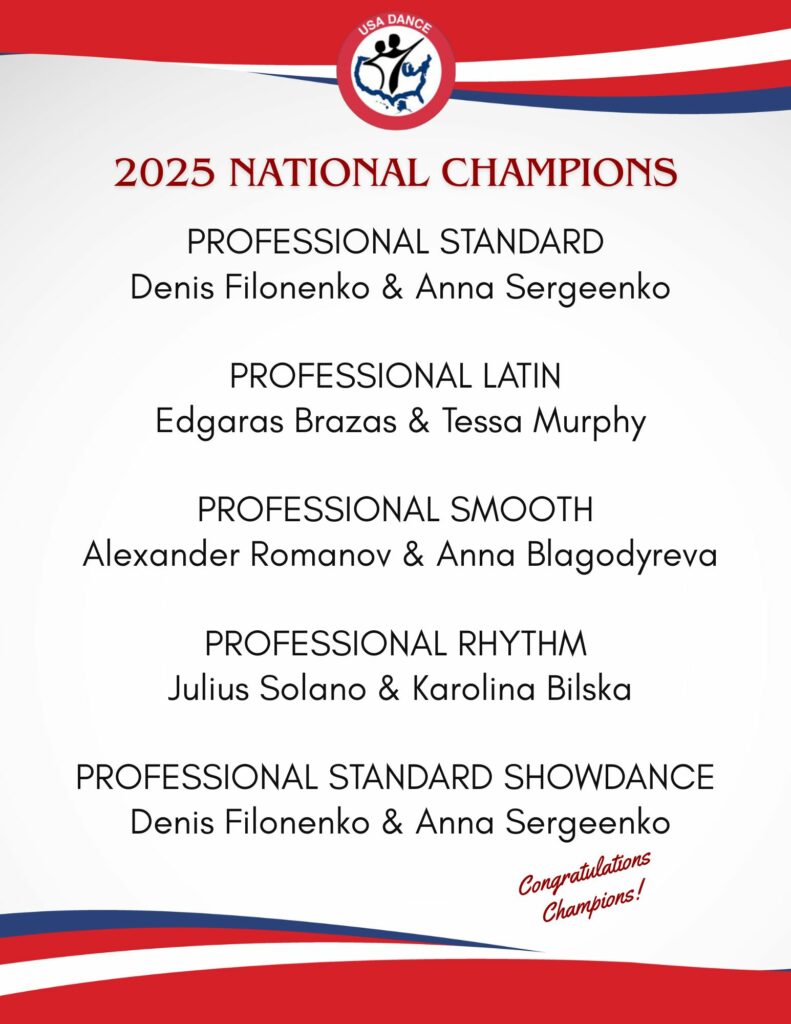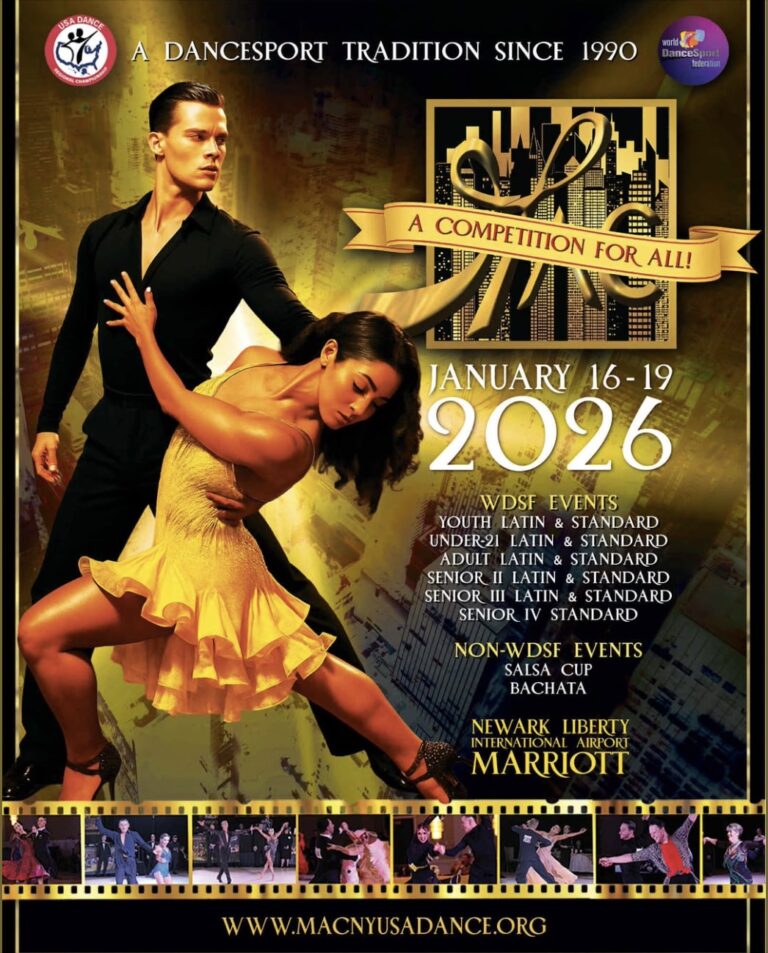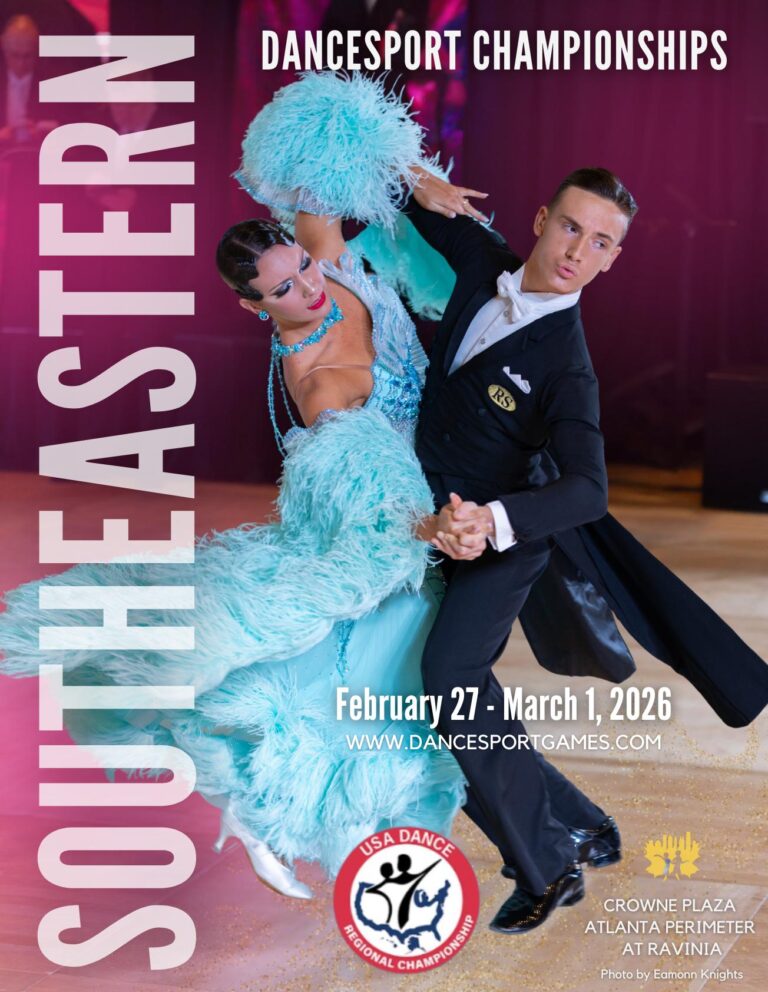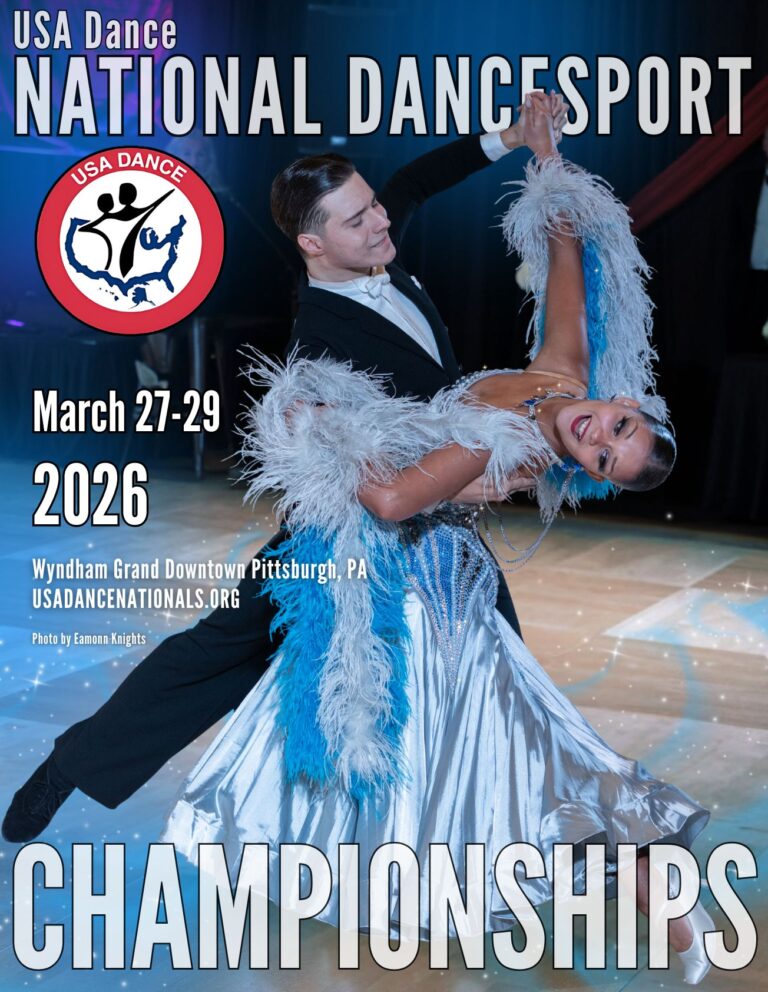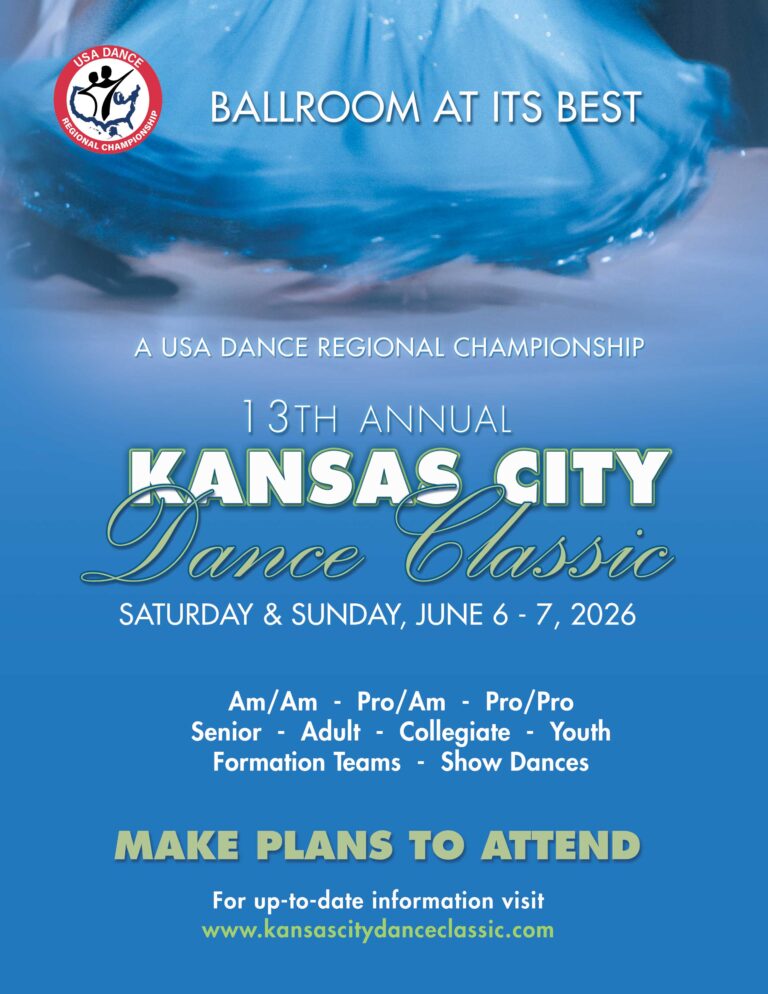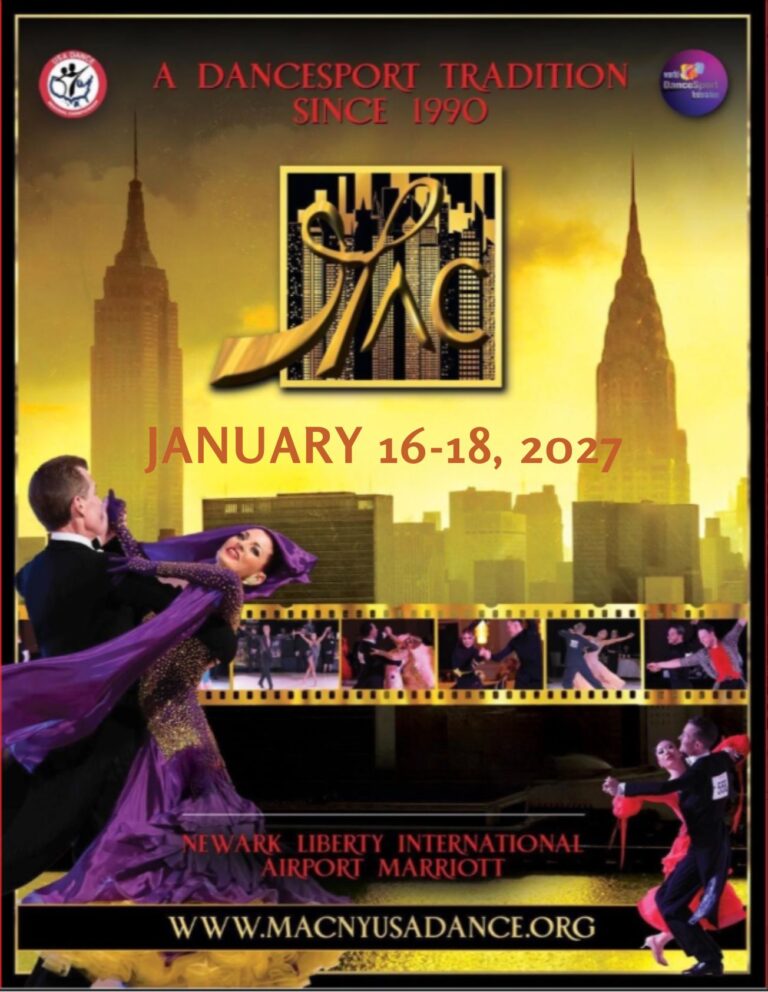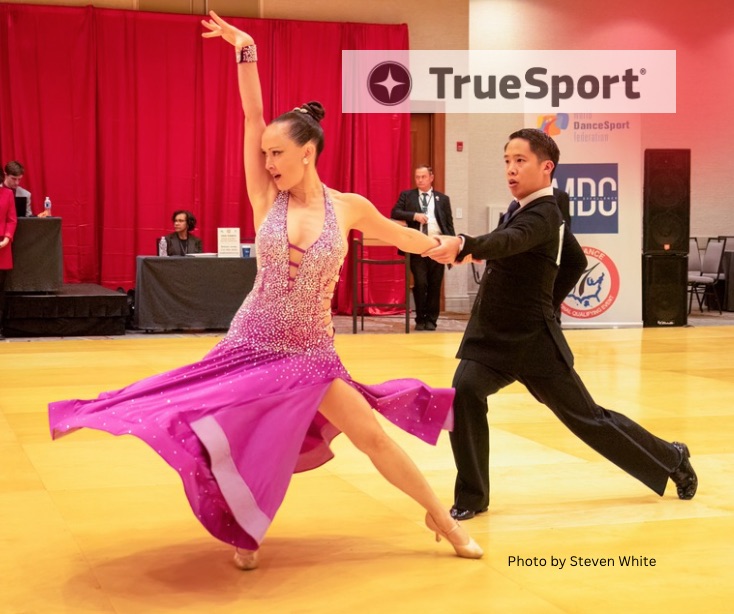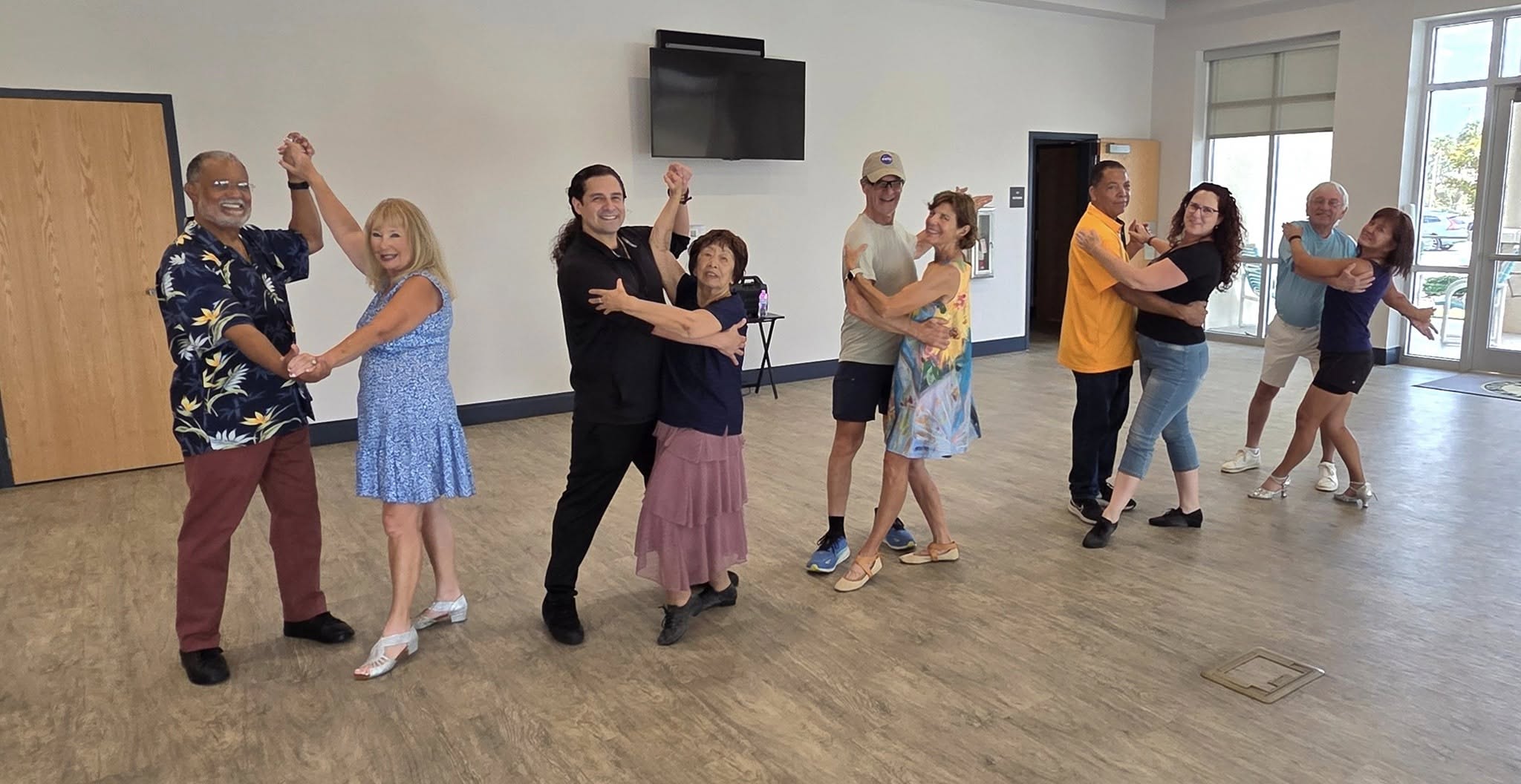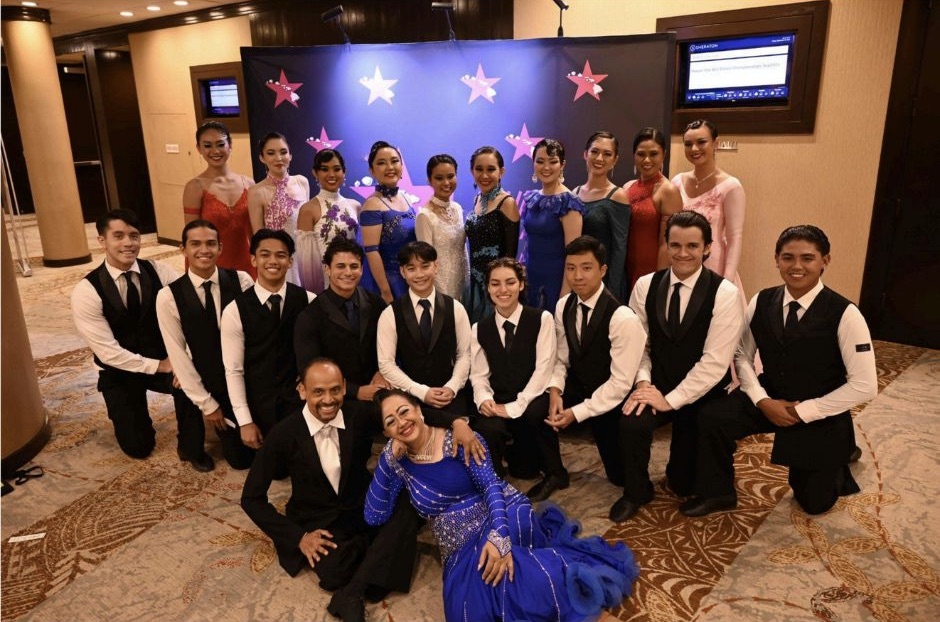The finalized rules for qualifying for 2023 – 2024 (and future years) are below! In addition to providing the regulations themselves, we feel we owe it to our membership to explain our thought process for making these changes.
It is our objective to be the definitive governing body for DanceSport in the United States. We believe that doing this provides all our competitive members with numerous benefits. For example, it is critical to us that competitive DanceSport members can compete for meaningful achievements. This also governs our drive towards higher standards for competitive events and fair rules. It also keeps the experience fun and impactful for all.
USA Dance is the National Member Body of the World DanceSport Federation (WDSF) and the Recognized Sport Organization for the United States Olympic and Paralympic Committee (USOPC). These affiliations provide USA Dance members with numerous benefits. Some of these are more obvious, such as selection to Team USA (the United States Team), and the ability to participate in prestigious World Championships. Others are less obvious, such as access to the World Games and the peace of mind that comes from a SafeSport-compliant organization. These affiliations also come with obligations – in particular, we are obligated to run a National Sports Program. This means that we must:
- Identify, qualify, and select the most elite athletes to represent the United States on the world stage.
- Foster the development of athletes and support their growth.
We’ve begun the process of re-implementing the traditional selection processes expected of a USOPC-affiliated organization. We believe these processes benefit dancers of all levels, and we encourage competitors to read the FAQs following this description of the qualifying procedures. It is hoped that this re-implementation process will cause minimal disruption to the competitors. Unlike post-COVID years, there will be no significant adjustments to these policies between now and Nationals 2024, held March 22 – 24 in Pittsburgh, Pennsylvania. Note that adjustments to future years will be done incrementally.
There are several methods available to earn the right to vie to become a USA Dance National Champion:
Primary Methods:
- Top 75% (rounded up) at any of the Regionals grants you qualifying status. If three couples or fewer are in a particular event, all three qualify.
- Dance in one Regional and any other USA Dance-recognized competition (recognized Collegiate event, Challenge, Open Championship, Regional Championship). This qualifies the dancers regardless of placement, provided the athletes are DanceSport Ballroom Division members at the time of competing in those events.
- Dance in any three USA Dance-recognized competitions (recognized Collegiate, Challenge, Open Championship, Regional Championship). This qualifies the dancers regardless of placement, provided the athletes are DanceSport Ballroom Division members at the time of competing in those events.
Notable Exceptions
To continue the development of nascent programs, several exceptions are provided. These exceptions will be evaluated on an individual basis annually.
- Medical Waivers: There are rules in place for competitors who become unable to qualify typically. Please refer to the rulebook for the details.
- Residents of Hawaii and Alaska: Must attend only one recognized competition (recognized Collegiate, Challenge, Open Championship, Regional Championship) – Qualified regardless of placement, provided the athletes are DanceSport Ballroom Division members at the time of competing in those events. This exception is provided due to the extreme difficulty faced by Hawaii residents and Alaska residents in attending competitions within the continental US.
- Senior V Dancers: Senior V dancers who are only dancing in Senior V events do not need to qualify. However, Senior V dancers who hope to dance down into lower age categories (Senior III or IV) will have to qualify for those categories.
- Developing Programs: No qualification is necessary for Showdance, Solo, Pro/Am, Teacher/Student, Mixed Proficiency, and Professional events.
- Full-Time College Students: College students are automatically eligible for one level of collegiate and will get the same level in Adult as part of the college package. No qualification is necessary. However, college-student couples who opt to qualify traditionally will receive access to two levels of college and two levels of Adult, just as they would if no exception was in place.
- This exception does not apply to the Adult-Championship category, as all couples eligible for Team USA must qualify by traditional means,
- Those couples that are mixed (one full-time college student and one non-college student) must qualify and compete as a traditional Adult Amateur couple.
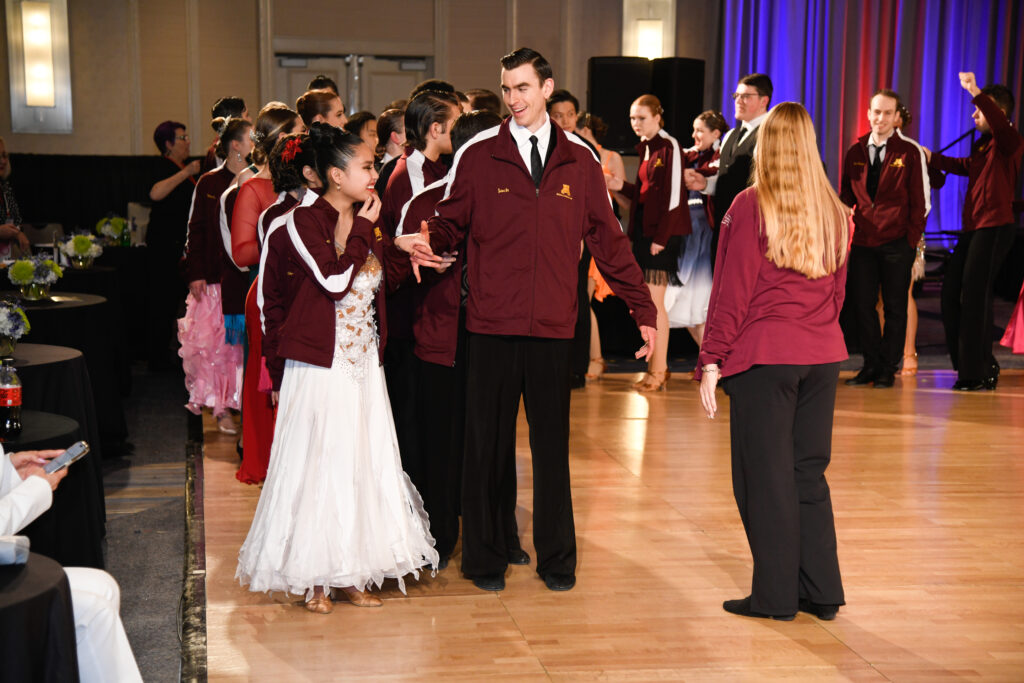
Frequently Asked Questions
- Why Should Anyone Have to Qualify?
As we noted above, qualifications are our responsibility as the Recognized Sport Organization for the USOPC and the WDSF National Member Body. Being a member of these bodies is a great honor.
As the governing body for DanceSport that crowns Champions to represent the United States, we are obligated to have a coherent process in place. What better way than to look to our peers in gymnastics, swimming, track, and many other sports? This makes it a more meaningful achievement for our Champions. They are a member of the organization that is recognized by the USOPC, part of Team USA, and compete on the world stage and at the World Games.
While this answer may satisfy those who compete at the highest level, we know many of you aren’t yet there in your dance travels. That’s OK! If this is the case, we highly recommend you read the answer to the next FAQ, which covers why qualifying benefits you as well.
- My friends don’t care about this WDSF stuff. They think qualifying is inconvenient and annoying. Why should they bother with qualifying?
We think this question is best answered with a question – If you were going to prepare for a National Championship, what steps should you take?
We know that our competitive members come from all walks of life and dance for all kinds of reasons. Fun – we think – should be first and foremost among them! But to prepare for a National Championship and make sure you have fun at it, you would probably want to:
- Get time and experience on the competitive floor throughout the year. Assuming you like competing, you will probably go to more than one competition each year.
- It is a good idea to get experience at competitions using the same rules you will encounter at a National Championship. It is no fun to find out on the day of the event that your choreography or costume is against the rules, which could result in lower placement or even disqualification.
- You would most likely want to know that the competitions you enter throughout the year will meet some standard of quality. It is no fun to pay for hotels, flights or gas and parking, etc., to dance on a 30 x 40 floor, or to have 20 couples marked by only three judges in just 60 seconds.
- You would not want to spend the time and money to go to Nationals if it is likely you are going to be in last place or feel like you were an obstacle on the dance floor. That said, perhaps you really really want to go because you really-really-really want to compete a lot.
This list adequately describes the process of competing on the USA Dance circuit and going through the process of qualifying for Nationals. No annoying headaches are required! By using this process, you – the competitor – get to reap the harvest at the end: Attending a National Championship and competing with the best of the best, while knowing you’ve prepared adequately for the experience. Even better, when not competing, you can attend workshops, buy a terrific costume at consignment, attend the social dance, and enjoy the great shows at night. And who knows, maybe you’ll earn the right to represent the United States in a World Championship!
- Why do certain groups get exceptions, and how is it fair?
Exceptions are not granted lightly. They are granted based on meeting one of two criteria: Is there an undue hardship? Alternatively, is there a program we are developing where the exception makes a material difference?
The first category describes the waivers given for medical reasons and for those from Alaska or Hawaii. We often tell others to “break a leg” before they head out on the floor, but literally breaking a leg could leave someone unable to dance safely for a significant period. Those couples should not be punished if they bought flights and did everything right to qualify but could not do so because of an unfortunate accident.
For those from Alaska or Hawaii, the nearest opportunity to qualify is 3000 miles away. Worse, if they missed the opportunity to qualify in Los Angeles this Summer, then the next qualifying events are generally 12-hour flights away. This represents an enormous burden in both time and costs. Part of providing a fair playing field in which to compete is providing an equitable playing field so our athletes can participate in our National Sports Program.
The second category describes programs that are recent and under development. As noted above, part of any National Sports Program is to develop athletes. This means efforts toward education, but also towards the expansion and growth of divisions. Solo Proficiency, Pro/Am, Professional, etc. are new categories in the WDSF portfolio, as noticed by the first Solo Proficiency World Championships offered in Spain this year. Part of our interest in collaborating with other dance groups, such as WDO, is that they can help us meet the objective of the USOPC and WDSF to develop athletes within the United States in many areas.
The Collegiate category also remains under active development. Most competitors understand the energy and excitement college students bring to all categories. And we believe there is plenty more that college students will bring to USA Dance members of all ages. The full scope of this project will take time, though we believe you will see additional fruits of our labor in the coming year.
- Will these qualifying policies change between now and the 2024 Nationals in the future?
There may be minor incremental changes between now and the 2024 Nationals. For example, there may be tweaks to the Medical Waiver policy to ensure it covers all the intended scenarios. However, we are committed to maintaining this policy and providing stability, so all our members can plan their schedules. We expect to use this policy as a starting point for 2024 – 2025, and future changes will be incremental in nature. Exceptions will be evaluated on a yearly basis and will be removed or approved as considered appropriate.

